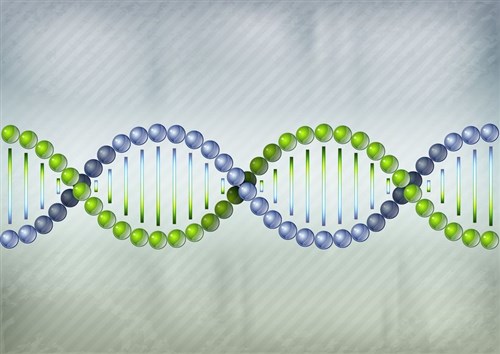
Embracing our DNA

This article was adapted from remarks made to 100 Hamline University student leaders at a March 3 “100 Who Influence” luncheon. United Methodist-affiliated Hamline University in St. Paul, Minnesota is named after a United Methodist bishop (Bishop Leonidas Lent Hamline). Bishop Ough talked about the unique characteristics of the United Methodist DNA, which is now part of each student’s own roots and story.
Have you heard of “23andMe”? You might have seen this ancestry testing service advertised on TV. Its slogan is “23 pairs of chromosomes, one unique you.” You send them a swab of your DNA; they analyze your DNA and then give you a detailed report about what your DNA tells you about your ancestry and a host of related traits, even your health. You can find out things such as if you have a sprinter’s muscle type, a propensity to drink more caffeine, or require more or less sleep. I might just have to send in a swab of my own DNA. I want to know if my ancestry is English—where my paternal grandfather immigrated from (yes, I am a descendant of an immigrant), or French, which the genealogist I have spoken to believes is the case.
Well, if I sent a swab of Dakotas United Methodism to “23andMe” to learn more about what our founding DNA might tell us about Dakotas United Methodists today, I know exactly what I would find out:
We have a propensity to be unrelenting learners. Everywhere the Methodists went on the frontier of America (and other nations around the world), they started schools and universities to provide a liberal education and feed the intellectual curiosity and innovative spirit of the people, particularly those who had not previously had access to education such as women, people of color, the poor, and first-generation students. We have inherited the DNA of the learner, the curious, the innovator, the seeker, the explorer.
We have a propensity to change the world. The Methodist movement that swept across 18th-century England lifted so many people out of hopelessness and poverty that historians credit the Methodist Church with preventing an English Revolution. And when the Methodist movement came to North America and the frontier of Dakotas, its goal was to reform the continent. The mission statement of The United Methodist Church calls on its members and constituents to transform the world. We have inherited the DNA of the transformer. Dakotas United Methodist clergy and laity change the world; they make a difference.
We have a propensity to do good and to work for the common good of all. When John Wesley, the founder of the Methodist movement, was asked by his lay preachers what they should teach, he said, teach people to first “do no harm, avoiding evil of every kind,” and second, “to do good of every possible sort, as far as possible, to all people in every place as far as possible.” This commitment to do good and to always serve the common good forms the very core of The United Methodist Church’s mission. This is our DNA!
We have a propensity to lead. Everywhere the Methodists went on the frontier of America, they led the way, not only in education, but also in health care and care for the elderly and the orphaned. They became the civic leaders, the legislators, the business entrepreneurs. They practiced and modeled civic responsibility. The history of The United Methodist Church and the Dakotas Annual Conference is a rich litany of such leaders.
We have a propensity to persevere. There are more United Methodist churches in this country than there are United States post offices. This is the result of passionate perseverance. Preachers on horseback (circuit riders) fanned out across the country through rain, snow, sun, and storm. Most only lived a few years. Many of the worship and small group practices that are commonplace at our churches today are the result of dedicated circuit riders who persevered in spite of fire, financial crises, war, demographic shifts, and even internal dissension. The United Methodist Church’s mission, vision, and values have remained a steady guidepost—and Dakotas United Methodists have persevered in sharing the good news in their communities.
We have a propensity to be lovers. John Wesley preached a signature sermon in response to a question about the distinctiveness of a Methodist. He said the mark—the distinctive characteristic—of a Methodist is his or her love of God and love of neighbor. Growing in one’s capacity to love self, neighbor, creation, and the “other” is a core part of our DNA!
I left home when I was 18 and went off to the university. I have been shaped by every life experience since—my education, the places I have lived, my vocation as a United Methodist pastor and bishop, my wife and children (and now my grandchildren), my frie nds, and my work colleagues. In many respects, I am a different person than I was at 18, but I still carry within me the DNA of my family and home of origin. We can move on, but we can’t change our DNA.
nds, and my work colleagues. In many respects, I am a different person than I was at 18, but I still carry within me the DNA of my family and home of origin. We can move on, but we can’t change our DNA.
My prayer for every Dakotas United Methodist clergy and lay person is that we claim, embrace, reflect, and live our United Methodist DNA:
• remain curious and continuous learners,
• transform the world,
• do all the good we can in every place we can,
• exercise leadership and civic responsibility,
• persevere, persevere, and
• love, love, love.
May it be so!
Bishop Bruce R. Ough is resident bishop of the Dakotas-Dakotas Area of The United Methodist Church.